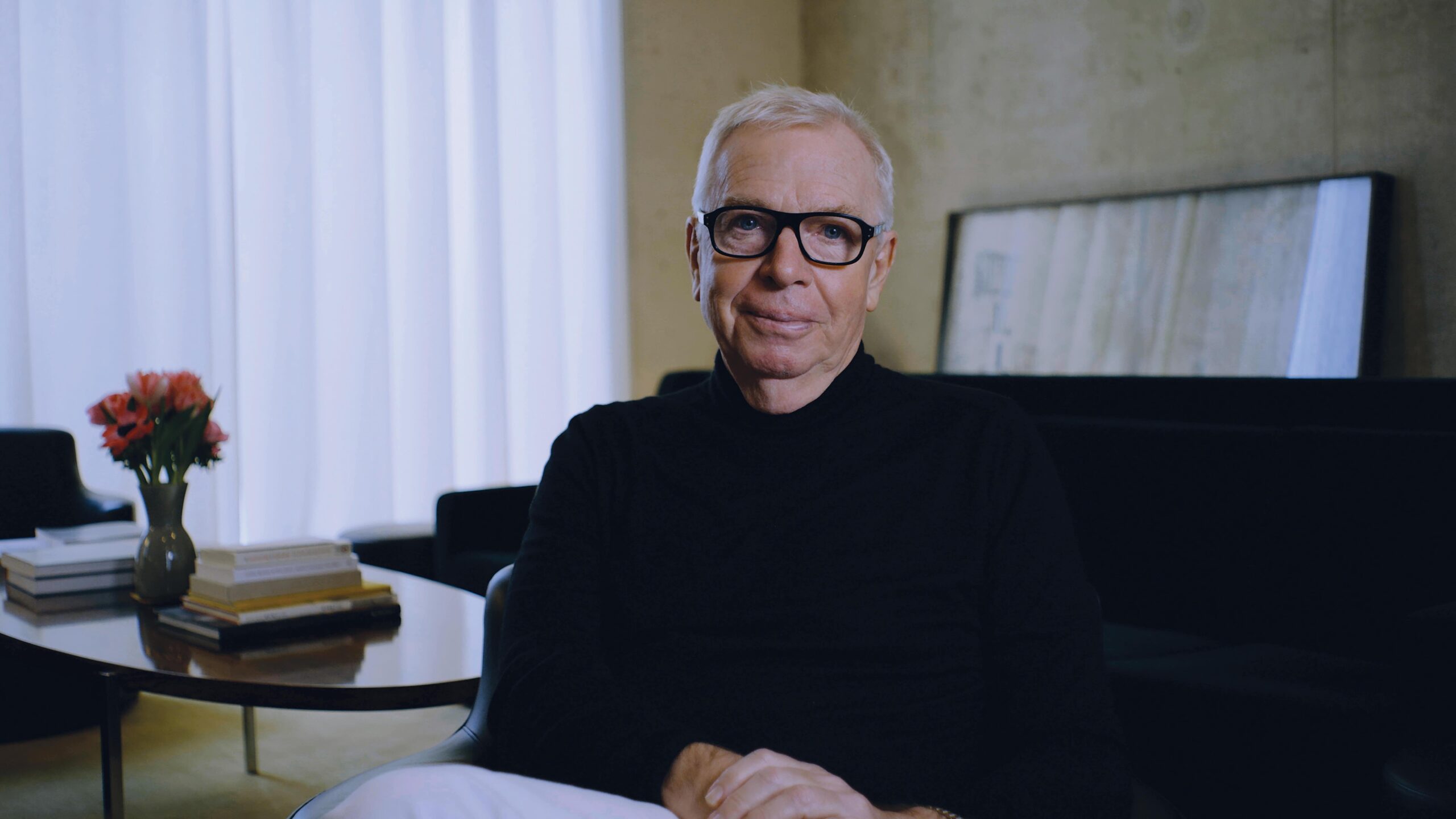Every summer in London, the Serpentine Pavilion is unveiled in Kensington Gardens, reimagining the possibilities of architecture and public engagement. This year’s commission, by Counterspace, joins 20 years of projects from designers like Junya Ishigami, selgascano, Sou Fujimoto, Herzog & de Meuron, Jean Nouvel, and Rem Koolhaas.
The Johannesburg-based architectural studio is made up of Sumayya Vally, Sarah de Villiers, and Amina Kaskar—and they are the youngest architects yet to be commissioned for the internationally renowned program. They’re now also the first to receive a two-year commission, as a result of the impact of COVID-19. The plan for the pavilion continues to evolve around gathering spaces and community—things that are now more precious than ever.
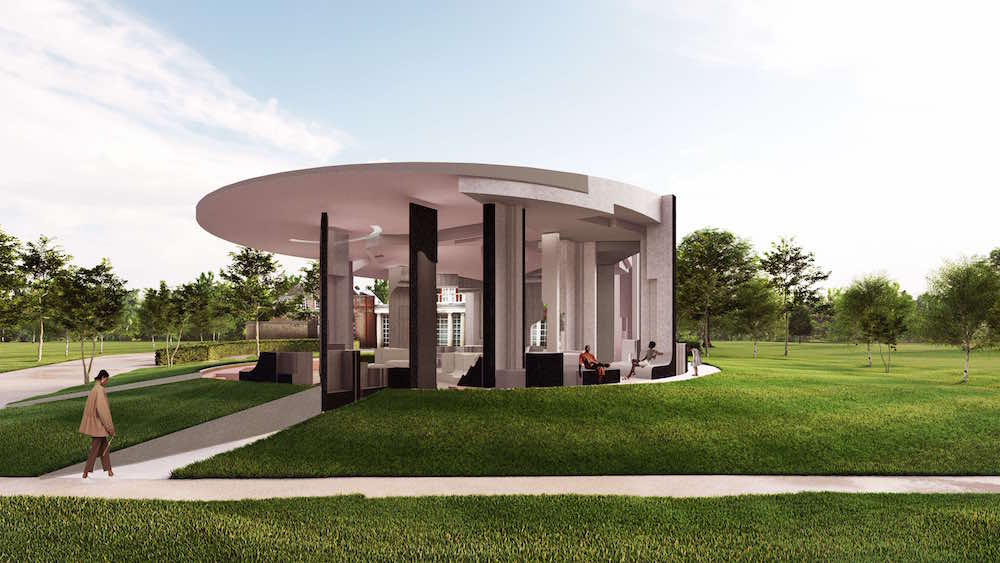 Courtesy of Counterspace.
Courtesy of Counterspace.
Asking how architecture can create a space where we are all linked, Counterspace designed a pavilion in parts that can be added to, spliced, subtracted from, and live and move outside Kensington Gardens, and then come back together again.
Whitewall spoke with Vally about Counterspace’s investigation of displacement, migration, race, environment, and segregation as well as the possibility of inclusion in architecture.
WHITEWALL: How did you initially approach a project like the Serpentine Pavilion, an annual initiative that’s part of the culture of London?
SUMAYYA VALLY: It was important for me that this project was not about a signature style, but about a gesture. I really wanted the project to be about a coming together of differing worlds and realms.
I believe in architecture that is about crossings between disciplines and between worlds. The issues that the project talks to—identity, belonging, gathering—are all issues that I deal with in Johannesburg.
I was inspired by a text by Christina Sharpe, called In the Wake: On Blackness and Being. In it, she describes the situation we are in as being the result of several consequences. I wanted the project to take a position on the consciousness of several things—environmental racism, migration, segregation.
In response, this project looks outward from the Serpentine in order to look inward at London and beyond; to bring in other voices, narratives, histories, and futures to the Serpentine. As a critical take on social sustainability and architectures and institutions of care, our project takes the form of a several-month-long wake, during which the structure of the pavilion is systematically brought into being from places of community and minority that make London.
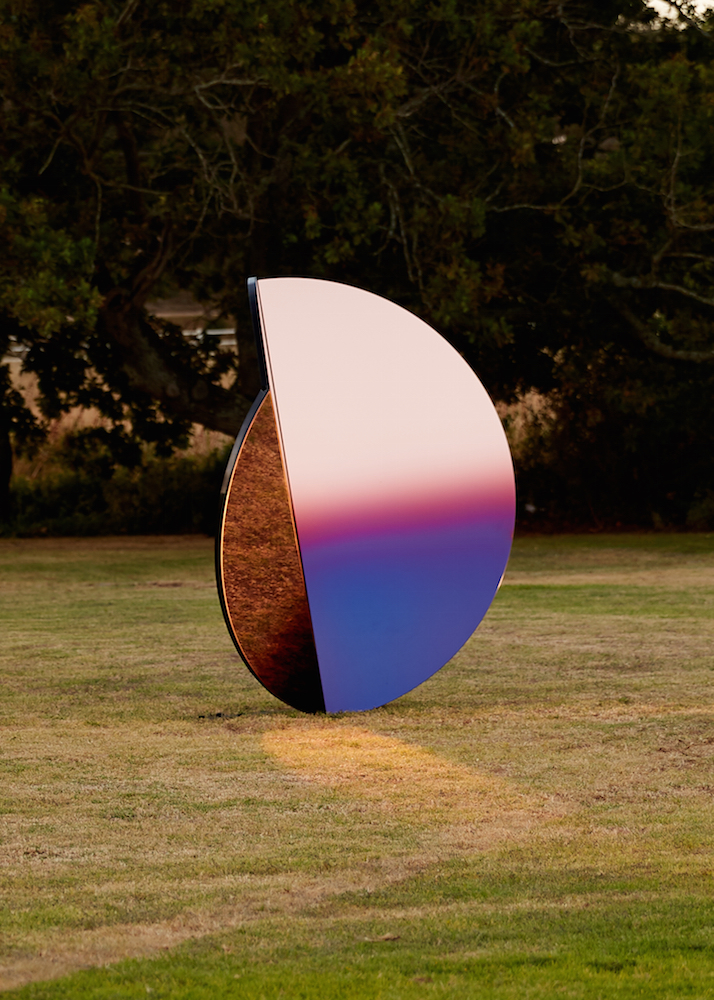 Courtesy of Counterspace.
Courtesy of Counterspace.
In this pavilion, an engagement with the dis-placement, and re-placement of peoples and place, we acknowledge sites of absence and sites of presence. It is a set of architectures entangled in the contemporary reconfiguration of belonging—pieces of Brixton, Hoxton, Hackney, Tower Hamlets, Edgware Road, North Kensington, et cetera are superimposed onto the Serpentine lawn in Hyde Park.
Where they meet, they produce spaces to be together. Spaces where, perhaps, you could meet someone.
WW: Why was it important for you to create a pavilion that could exist, in part, beyond Kensington Gardens? That parts of the pavilion could go to other neighborhoods but also return?
SV: Architecture is complicit in separating, othering, excluding, but it can also be a force for the opposite. Architecture that moves me most is architecture that makes an offering about the human condition and about people—that facilitates and has something to say about our relationships to each other, and our relationships to territory and place.
The methodology for the pavilion is shaped through the lens of a fundamental interest in territory, identity, belonging, and trying to understand architecture beyond that which is built. The sharing and exchange of pieces brings together people, places, and ideas onto the same platform and the same realm. It is really important for me that the project becomes truly collaborative with parts of London and that the people and places who inspire the project get to take ownership of it through some means.
Now, more so than ever, spaces of gathering need to be valued. They are sacred.
WW: How are you hoping the pavilion will be engaged with at a personal level?
SV: The pavilion is formed from an intersection, superimposition, and abstraction of elements drawn from places of gathering specific to migrant and peripheral communities across London.
This has produced new configurations of meeting at various scales of intimacy, and it is my hope that they will foster moments of connection, contemplation, and community for visitors from varying backgrounds.
WW: Can you tell us about the material you chose for this pavilion?
SV: Materially, the pavilion takes into consideration construction’s role not only socially, but also for its wider impact on the environment. The K-Briq being worked with is made entirely from industrial and construction waste, and it is not fired, greatly reducing its carbon footprint.
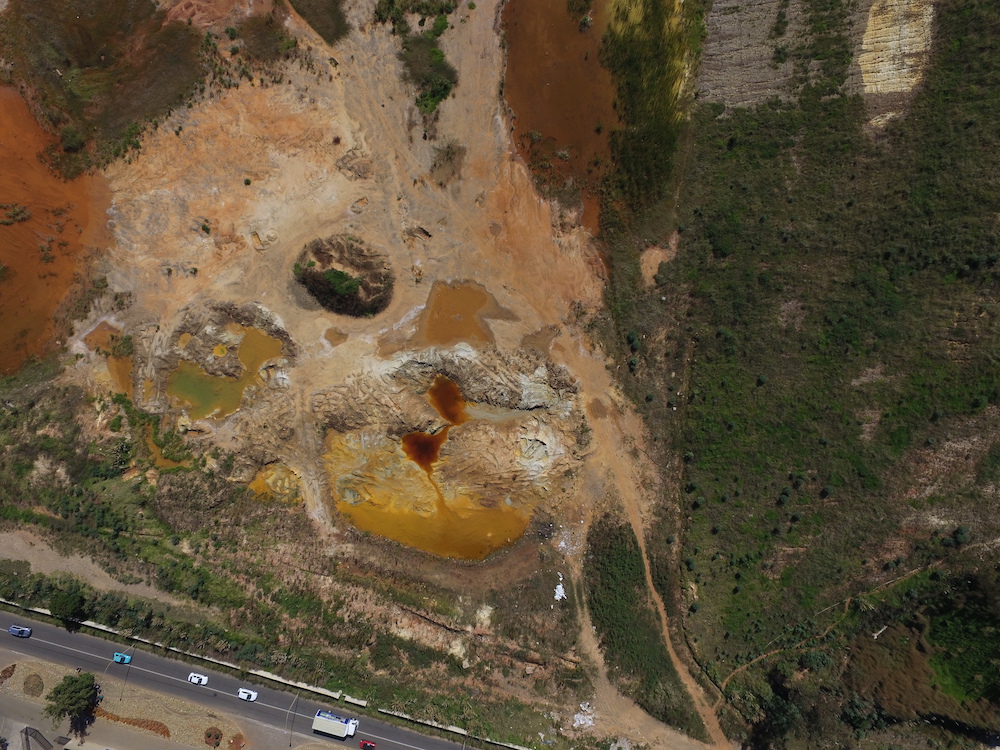 Courtesy of Counterspace.
Courtesy of Counterspace.
WW: What role does material choice play in your practice? When considering materials, are you always trying to make sure you’re able to approach sustainably?
SV: My favorite materials to work with are light, color, and sound. Architecture is about creating atmospheres. In my city, Johannesburg, the aural and the atmospheric are strong prompts, and I enjoy pushing these in architectural and spatial works. Social sustainability has always been a key area of interest, and because I work in a place with little resources, I am used to the hustle of making work with very little. There is a resourcefulness embedded in the ways of being in much of Joburg.
On the other hand, there is also complete excess in some areas—we have one of the most unequal societies in the world. In Johannesburg, forms of environmental racism are extreme. Issues of labor, class struggles, exploitation of resources, forces of capitalism, and their effects on the environment are all inextricably intertwined. When we make work, we have to understand this deep archaeology of factors, that we can never respond in a vacuum—architecture is complicit in its response, and we have to operate with an awareness of the full spectrum of sustainability.
WW: You define your studio practice by embracing inclusivity, otherness, and a look toward the future. How is Counterspace a response to architecture and design’s history of exclusivity, silence, and complicity?
SV: Memory and history are contested spaces. Architecture for and in my context has never been given a chance to develop without the trauma of history; or without the violent silencing that inherited systems and architectures bring. I see the project of young African architects as having to simultaneously hold and bear the weight of history and to speculate about what our present and future can be. I believe that forces of representation and difference—being a woman, being Muslim, being African, and so many other factors that the young people I work with and teach bring, are strengths that allow us to see and think differently.
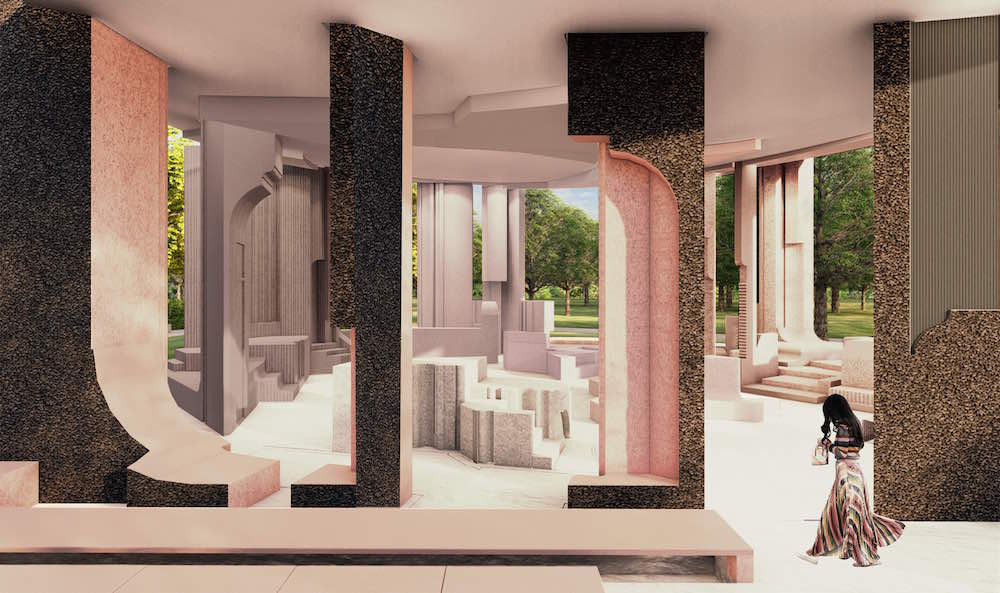 Courtesy of Counterspace.
Courtesy of Counterspace.
WW: I love that you define Counterspace’s areas of focus—architecture, exhibitions, installations, product design, and research—as “obsessions.” Why that distinction?
SV: Work really is a vocation, especially when one is ambitious about the impact that that work should have.
My work often operates at several different speeds. I believe very much that, as a young African architect especially, I need to be working at the slow, meandering pace of research and academic practice, the speed of instant drawing and installation work, and the slow, steady pace of architectural practice. The speeds of a generational project and the boldness of quickly testing ideas exist simultaneously.
The most interesting projects for me exist within many different timescales.
The obsessions are about a deep interest, about being consumed with all the realms of the project.
WW: In projects like “Folded Skies,” you found inspiration in the beauty that comes from something like pollution. Can you tell us more about this, and your interest in finding the potential for beauty in something problematic?
SV: I am very inspired by the atmospheric. I see this as an interesting way to enter architecture. My practice is inspired by drawing on Johannesburg conditions. The “Folded Skies” project was born out of an interest to capture Joburg light in form. It was a very quick and small snapshot of a much larger body of research, that was born in my master’s thesis, a research into the mine-dust of Joburg as archive of the city, layers of history continually being brought to the surface.
In that time, I spent a lot of time looking into remediating toxic streams with chemical engineer Dr. Craig Sheridan. We grew color pigments from waste streams under laboratory supervision. In Joburg, the light quality is iridescent because of these same compounds in the dust, and we used the same pigment compounds to treat the mirrors in the “Folded Skies” project. It does not directly deal with remediation, but it is rooted in a deeper body of research about understanding the conditions of the city.
WW: Do you see your practice as a form of activism?
SV: Yes. All practice, intentionally or unintentionally, is complicit in perpetuating various philosophies, whether one is aware of it or not.
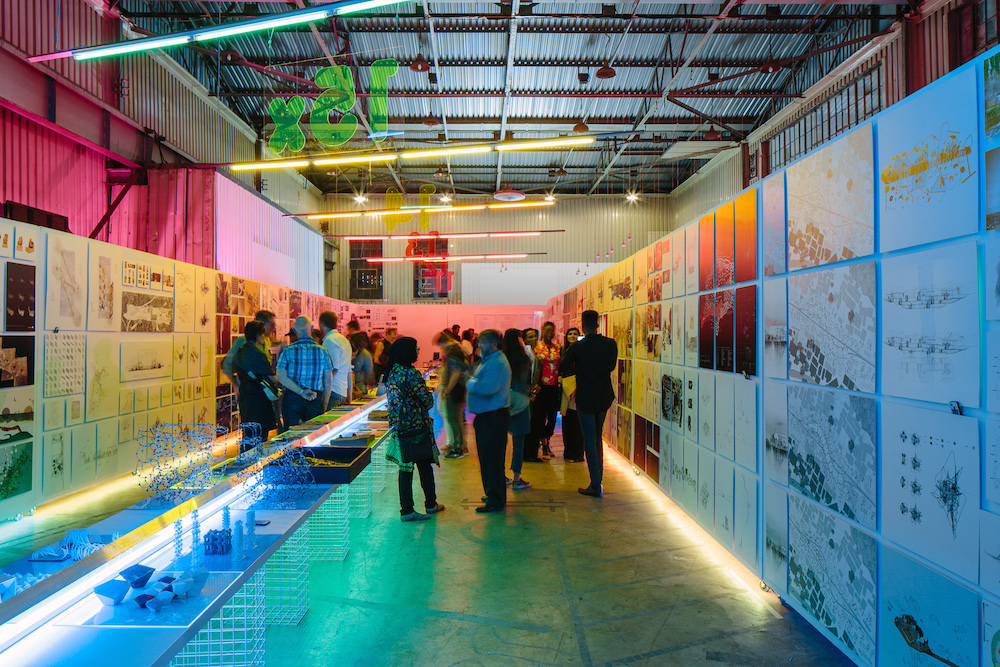 Courtesy of Counterspace.
Courtesy of Counterspace.









